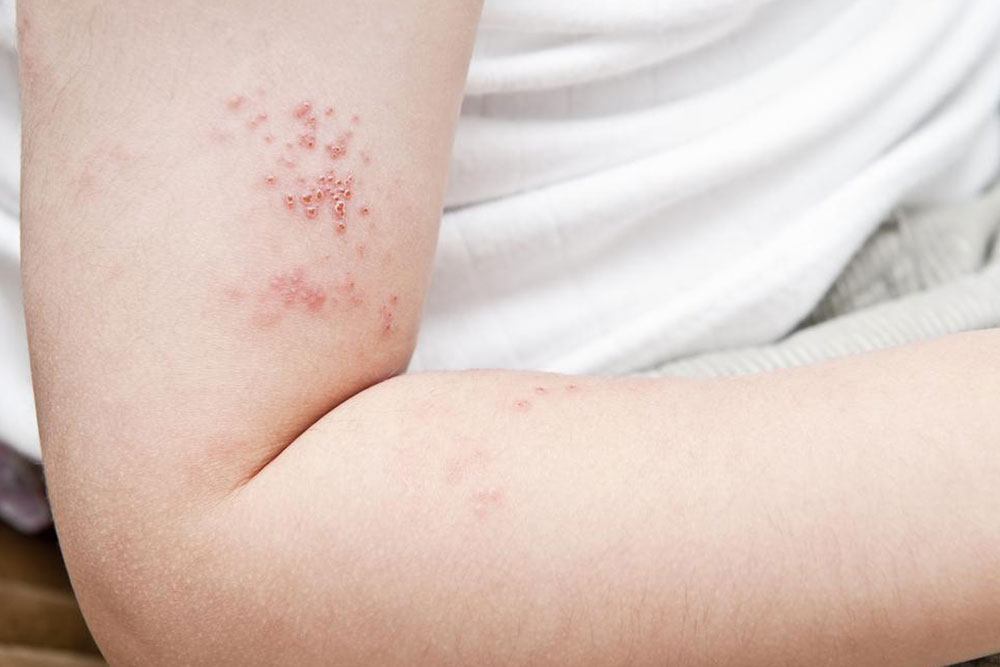5 Techniques For Effective Shingles Pain Management

Affecting nearly one in three Americans, shingles, also known as herpes zoster, are painful rashes that appear in the form of a band on the skin or in a small area on the skin. The rashes appear on one side of the face or the body of the affected person.
What are the causes of shingles pain?
Shingles is caused by the varicella zoster virus (VZV). This virus also causes chickenpox. In some cases, this virus lies dormant in after a person recovers from chicken pox during childhood. The virus becomes active again in adulthood due to a weak immune system, reactions to certain medications, and factors related to age. The virus may again become active decades after the person was afflicted by chicken pox.
Rashes are accompanied by a discomfort known as shingles pain. The pain may go away as the person recovers from the rashes. However, in certain cases, there might be some damage caused to the nerves. This is because the virus travels through the nerve roots of the body. If the pain lasts for three months after the rashes disappear, the person might be suffering from post-herpetic neuralgia (PHN). The pain occurs in the chest and forehead areas. Generally, PHN affects people who contract shingles after the age of 50 years. In the case of persistent PHN, it is necessary to consult a doctor immediately and get some immediate medical attention.
What are the symptoms of shingles?
Symptoms of shingles appear in stages. In the early stage, the person experiences flu-like symptoms that include diarrhea, chills, or stomach ache. These symptoms are not accompanied by any kind of fever. There might be swelling or tenderness around the lymph nodes. There will be a sensation of numbness, tickling, tingling, burning, or pain in the areas where the virus affects the nerves.
In the active stage of this disease, rashes will star to appear in the areas where one was experiencing pain. They will appear as a strip or a band on the skin. The rashes appear in the form of blisters, which are usually filled with fluids. There will be itching and pain along the affected areas. After the first outbreak of the blisters, they will scab over in about 5 days as the treatment begins. It takes about 2–4 weeks for the rashes to heal. However, there might be some scarring even after complete recovery. For some people, the pain may persist three months after the rashes heal.
Techniques for effective shingles pain management
Effective shingles pain management is the major part of the treatment of this disease. It may be necessary to apply the techniques for shingles pain management during the healing process or even after the rashes go away completely and the pain persists. Here a few ways for effective shingles pain management:
- One of the natural ways for shingles pain management is to use a mixture of aloe vera and cayenne pepper. Mix one teaspoon of aloe vera with 1/4th teaspoon spoon of cayenne pepper. Add one teaspoon of coconut oil. Mix all of these thoroughly and apply the mixture to the affected areas with a clean spongy cotton ball. This will give immediately relieve shingles pain and also help in healing the rashes.
- Another natural way for shingles pain management is to apply eucalyptus oil in the affected areas. Gently massage the oil to get relief from the pain and itchy. Lemon oil can also be used as an alternative to alleviate shingles pain. These essential oils help to provide relief from the pain caused due to nerve damage. These oils can either be massaged directly to the affected areas or added to baths or applies as compresses.
- Cold water or wet towel compresses can be also used for shingles pain management. These have a cooling effect on the rashes that help to keep pain and itching at bay. This can be done several times a day, as and when required. It is advisable not to use ice packs as they have the potential to increase itching sensation in the affected areas.
- In the case of extreme pain, it is necessary to consult a doctor. The doctor may recommend pain killers. These medications do not really help in recovering from shingles but may provide relief from shingles pain. A doctor may also recommend antiviral medications. However, these medications are more effective in preventing nerve pain when taken two–three days after the first onset of shingles. Antiviral medications are more of a preventive method for shingles pain management.
- Other shingles pain management techniques include therapies such as acupuncture, biofeedback, transcutaneous electrical nerve stimulation (a form of therapy involving mild electrical current to provide relief from shingles pain), and psychological therapies including cognitive-behavioral therapy and relaxation techniques. The affected person may have to consult a pain management specialist who will suggest ways for shingles pain management.



